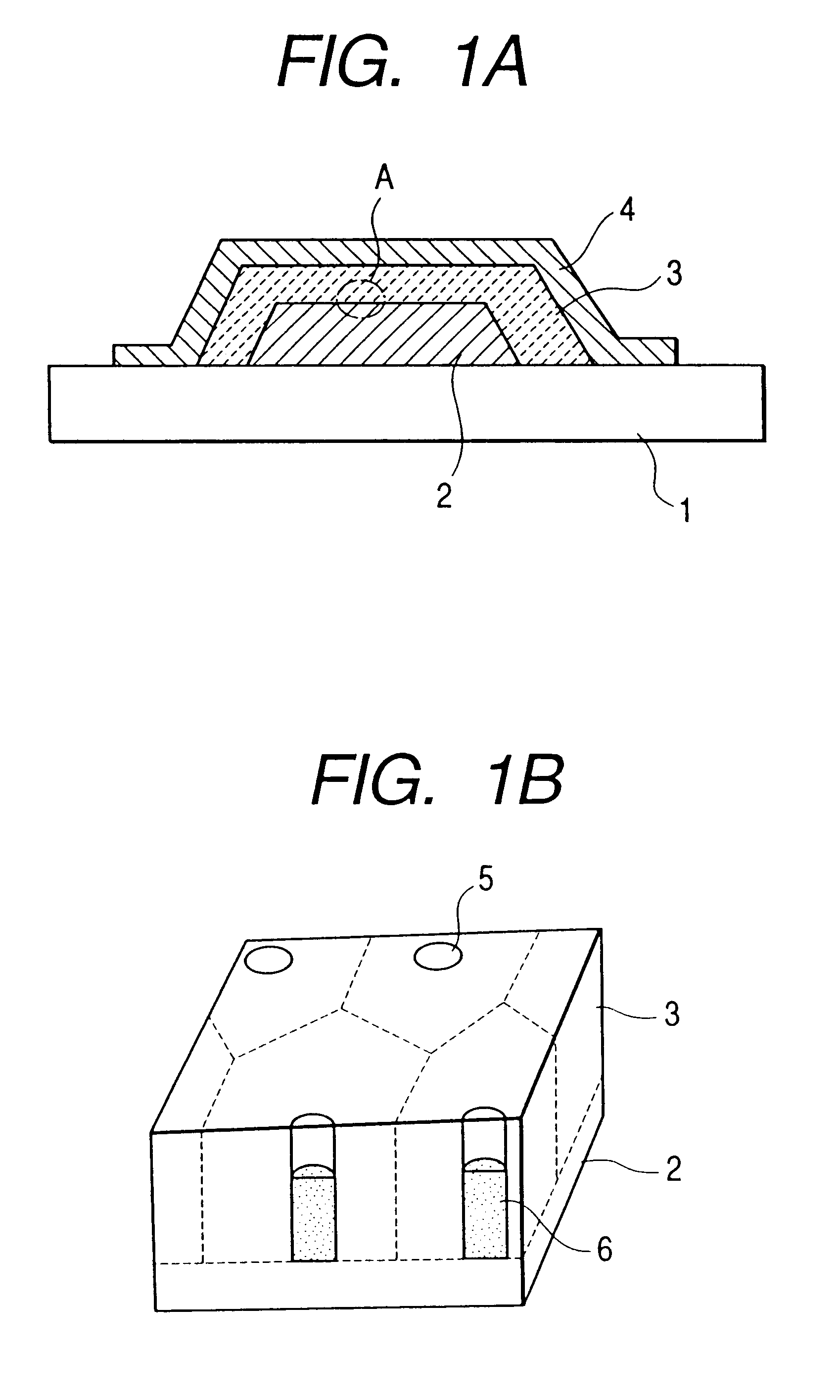Electron-emitting device provided with pores that have carbon deposited therein
a carbon-deposited, electron-emitting technology, applied in the manufacture of electrode systems, discharge tubes with luminescent screens, discharge tubes, etc., can solve the problems of poor repeatability, impede the enhancement of definition, and spread of electron beams
- Summary
- Abstract
- Description
- Claims
- Application Information
AI Technical Summary
Problems solved by technology
Method used
Image
Examples
first embodiment
of the First Embodiment
FIG. 7A is a plan view of a substrate on which five electron-emitting devices of the present invention are placed and FIG. 7B is a schematic sectional view along 7B-7B of FIG. 7A.
In FIGS. 7A and 7B, numeral 1 denotes a substrate, 73 anodic oxide layers, 71 lead wires of the lower electrodes, 72 a lead wire of the upper electrodes, and 74 intersections between the lead wires 71 of the lower electrodes and the lead wire 72 of the upper electrodes, at which the electron-emitting devices of the present invention are placed.
In the present example, substrates, each including five electron-emitting devices in either one of the structures of the four types illustrated in FIGS. 2A, 2B, 2C, and 2D, will be called substrates A, B, C, and D, respectively.
A production method of the present example will be described specifically.
(Step 1: Step of Forming the Lower Electrode of Metal on the Substrate)
The substrate 1 of quartz glass was washed well with detergent, pure water, ...
second embodiment
FIG. 11A is a sectional view of the second embodiment. FIG. 11B is a partly enlarged, schematic view of part A in the sectional view of FIG. 11A. The present embodiment uses the anodic oxide layer for the insulating layer. In FIG. 11A reference numerals are given in the similar fashion to those in FIGS. 1A and 1B.
The substrate 1 to be employed herein can be selected from quartz glass, glass with a decreased content of impurity such as Na, soda lime glass, a glass substrate obtained by depositing SiO.sub.2 on soda lime glass by sputtering or the like, ceramics such as alumina, an Si substrate, an Si substrate with a deposited layer of SiO.sub.2, and so on. Particularly, when the substrate 1 is a semiconductor substrate, a driver or the like for driving the electron-emitting device can also be mounted simultaneously.
The lower electrode 2 is selected from metals, such as Al, Ta, Nb, Ti, Zr, Hf, or Si, and semiconductors that can undergo anodic oxidation. The thickness of the lower elec...
third embodiment
FIG. 20A is a sectional view of the electron-emitting device of the present embodiment. FIG. 20B is a partly enlarged, schematic view of part A in the sectional view of FIG. 20A. The present embodiment is application of the anodic oxide layer to the insulating layer. FIGS. 21A to 21D illustrate respective electron-emitting devices having a variety of electron-emitting bodies. FIGS. 22A and 22B show other structural examples.
In FIGS. 20A and 20B and FIGS. 21A to 21D, numeral 1 denotes a substrate, 2 an upper electrode, 3 an anodic oxide layer, 4 an upper electrode, 5 pores of the porous structure, 6 electron-emitting bodies, and 207 a small gap.
The substrate 1 to be employed herein can be selected from quartz glass, glass with a decreased content of impurity such as Na, soda lime glass, a glass substrate obtained by depositing SiO.sub.2 on soda lime glass by sputtering or the like, ceramics such as alumina, an Si substrate, an Si substrate with a deposited layer of SiO.sub.2, and so ...
PUM
 Login to View More
Login to View More Abstract
Description
Claims
Application Information
 Login to View More
Login to View More - R&D
- Intellectual Property
- Life Sciences
- Materials
- Tech Scout
- Unparalleled Data Quality
- Higher Quality Content
- 60% Fewer Hallucinations
Browse by: Latest US Patents, China's latest patents, Technical Efficacy Thesaurus, Application Domain, Technology Topic, Popular Technical Reports.
© 2025 PatSnap. All rights reserved.Legal|Privacy policy|Modern Slavery Act Transparency Statement|Sitemap|About US| Contact US: help@patsnap.com



